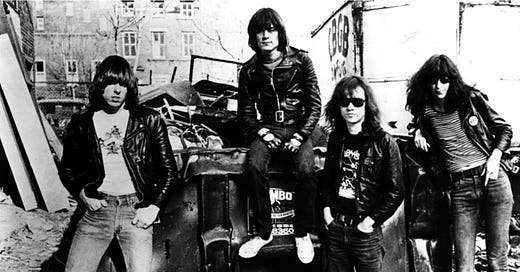For those who don't know, my part-time day job is teaching at St. John's University is my native Queens, NY. I teach five courses over two semesters; two in the spring, three in the fall. Each semester there is a class related to music and arts criticism. For Writing About Music: Pop, Rock, Rap (ENG 1074) the semester that just ended, I devoted a section to punk rock, specifically, the Ramones.
The Ramones remain the sun around which punk rock orbits. Who woulda thunk it? Streets in their native Forest Hills, Queens, and their adopted East Village, are named after these one-time pinheads. Movies are made about them, some in Spanish, because for some reason, they remain gods in Argentina, where the divine trinity is Maradona, Messi, and Joey Ramone. In 2016, the Queens Museum of Art held the most popular exhibit in its history: "Hey! Ho! Let's Go: Ramones and the Birth of Punk," which opened April 10, through July 31, 2016. There may have been an extension before the exhibit moved to th…
Keep reading with a 7-day free trial
Subscribe to Critical Conditions by Wayne Robins to keep reading this post and get 7 days of free access to the full post archives.



